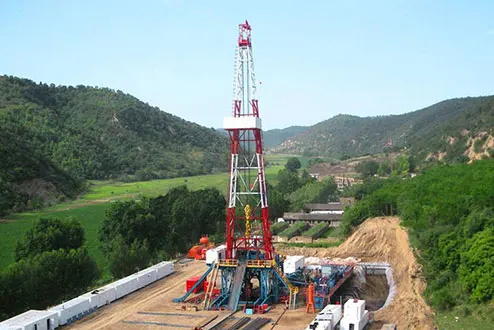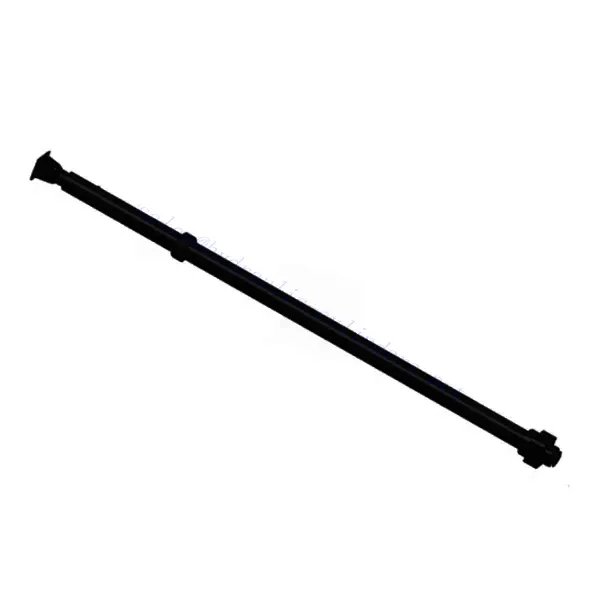Wave/ Tide Power Generation Equipment Cylinder
Üheks hüdrosilindrite tootjaks, tarnijaks ja mehaaniliste toodete eksportijaks pakume hüdrosilindreid ja paljusid teisi tooteid.
Palun võtke meiega ühendust üksikasjade saamiseks.
Post:sales@hydraulic-cylinders.net
Tootja tarnija eksportija hüdrosilindrid.
Wave/ Tide Power Generation Equipment Cylinder

The wave/tide power generation equipment cylinder is a revolutionary component in renewable energy. Explicitly designed for wave and tidal power generation systems, this specialized hydraulic cylinder plays a crucial role in converting the kinetic energy of ocean waves and tides into electrical power. Let’s explore this innovative cylinder’s features, usage methods, and maintenance.
The wave/tide power generation equipment cylinder is a game-changer in renewable energy generation. Its robust construction, high efficiency, and adjustable stroke length optimize the conversion of ocean wave and tidal energy into electrical power. By following the recommended usage methods and implementing regular maintenance practices, users can maximize the performance, longevity, and reliability of their wave and tidal power generation systems. The wave/tide power generation equipment cylinder is a significant advancement in sustainable energy technology, contributing to a greener and more sustainable future by harnessing the immense power of the oceans.
Wave/ Tide Power Generation Equipment Cylinder Key Characteristics:
- Robust Construction: The cylinder is built with high-quality materials and a complete design to withstand the challenging conditions of wave and tidal power generation. Its sturdy construction ensures durability and longevity, even in corrosive marine environments.
- High Efficiency: The cylinder is engineered to efficiently capture energy from ocean waves and tides, maximizing power generation potential. Its design optimizes converting hydraulic energy into electrical energy, delivering high-efficiency performance.
- Variable Stroke Length: The cylinder offers adjustable stroke length, allowing operators to optimize power output based on specific wave or tidal conditions. This flexibility enables efficient energy capture across various wave and tide intensities.
Wave/ Tide Power Generation Equipment Cylinder Parameter:
| Product Name | Wave/ Tide Power Generation Equipment Cylinder |
| Features: | Convert wave energy into hydraulic energy to push the hydraulic cylinders to move. The high-pressure oil then drives the electric motor to generate electricity, which is finally converted into electrical energy. |
| Bore diameter: | Up to 250mm |
| Rod diameter: | Up to 190mm Stroke up to 4800mm |
| Pressure: | up to 31.5MPa |
| Applications: | Wave/ Tide Power Generation |
Wave/ Tide Power Generation Equipment Cylinder Application:

Usage Method Of Wave/ Tide Power Generation Equipment Cylinder:
System Integration: The wave/tide power generation equipment cylinder is typically integrated into a more extensive power generation system. Follow these steps for practical usage:
a. Install the Cylinder: Securely mount the cylinder within the wave or tidal power generation structure, ensuring proper alignment and connection to the hydraulic system.
b. Hydraulic System Configuration: Connect the cylinder to the hydraulic system, ensuring all connections are secure and leak-free.
c. Monitor and Control: Utilize the control interface or software to monitor and control the Cylinder’s stroke length and operation in real time. Adjust the stroke length to maximize power output based on prevailing wave or tidal conditions.
How To Balance Two Hydraulic Cylinders?
Balancing two hydraulic cylinders involves adjusting their pressure and flow rates to ensure equal and synchronized operation. Here is a general guide on how to balance two hydraulic cylinders:
- Check Cylinder Specifications:
- Ensure the two hydraulic cylinders have the exact specifications, including bore size, stroke length, and load capacity. Matching cylinders will facilitate easier balancing.
- Connect Hydraulic Lines:
- Connect the hydraulic lines of both cylinders to a standard hydraulic power source or manifold. This will enable the cylinders to receive the same hydraulic fluid supply.
- Adjust Pressure Relief Valves:
- Locate the pressure relief valves on each cylinder’s hydraulic circuit.
- Start by setting the pressure relief valve of one cylinder to a relatively low-pressure setting.
- Gradually increase the pressure of the other cylinder’s relief valve until both cylinders operate at the desired pressure level.
- Observe Cylinder Movement:
- Activate the hydraulic power source or manifold to supply fluid to both cylinders.
- Observe the movement of the cylinders and check if they extend and retract at the same rate.
- If one cylinder extends or retracts faster than the other, adjust the pressure relief valves accordingly to balance the movement.
- Fine-Tuning:
- Make slight adjustments to the pressure relief valves to achieve equal and synchronized movement of the cylinders.
- Monitor the cylinder behavior closely and make incremental adjustments until both cylinders operate in perfect balance.
- Test Under Load:
- If the cylinders will be used to lift or move loads, perform a load test to maintain the balance under working conditions.
- Apply a known load to both cylinders simultaneously and observe their performance.
- Readjust the pressure relief valves to restore balance if any discrepancies are noticed.
- Regular Maintenance:
- Periodically inspect and maintain the hydraulic system, including the cylinders, valves, and hydraulic lines, to ensure optimal performance and to prevent any imbalances from developing over time.
Tehase võimekus ja suutlikkus:
(1) Kokkupanek
Meil on esmaklassiline sõltumatu teadus- ja arendustegevuse montaažiplatvorm. Hüdrosilindrite tootmistöökojas on neli poolautomaatset tõstesilindrite koosteliini ja üks automaatne kallutussilindrite koosteliin, mille kavandatud aastane tootmisvõimsus on 1 miljon tükki. Spetsiaalsete silindrite töökoda on varustatud erinevate spetsifikatsioonidega poolautomaatse puhastusmontaažisüsteemiga, mille kavandatud aastane tootmisvõimsus on 200 000 ja mis on varustatud kuulsate CNC-töötlemisseadmete, mehaanilise töötlemise keskuse, suure täpsusega silindrite töötlemise eriseadmete, robotkeevitusmasina, automaatse puhastusmasina, automaatse silindri kokkupanemise masina ja automaatse värvimise tootmisliiniga. Olemasolevad kriitilised seadmed rohkem kui 300 komplekti (komplekti). Seadmete ressursside optimaalne jaotamine ja tõhus kasutamine tagavad toodete täpsusnõuded ja vastavad toodete kvaliteedinõuetele.


(2) Töötlemine
Töödeldav töökoda on varustatud kohandatud kallutatud rööpse treipingi keskuse, mehaanilise keskuse, kiire lihvimismasina, keevitusroboti ja muude seotud seadmetega, mis suudavad töödelda silindritorusid, mille maksimaalne siseläbimõõt on 400 mm ja maksimaalne pikkus on 6 meetrit.

(3) Keevitamine

(4) Värvimine ja katmine
Väikese ja keskmise suurusega silindri automaatse veepõhise värvipinnakattega liinide abil, et saavutada automaatne robotlaadimine ja mahalaadimine ning automaatne pihustamine, projekteerimisvõimsus 4000 tükki vahetuse kohta;
Meil on ka poolautomaatne suurte balloonide värvimise tootmisliin, mis töötab jõukettaga ja mille projekteerimisvõimsus on 60 kasti ühe vahetuse kohta.


(5) Testimine
Meil on esmaklassilised kontrolliseadmed ja katsestendid, et tagada silindri jõudlus vastavus nõuetele.

We are one of the best hydraulic cylinder manufacturers. We can offer comprehensive hydraulic cylinders. We also provide corresponding põllumajanduslikud käigukastid. Oleme eksportinud oma tooteid klientidele üle maailma ja teeninud hea maine tänu meie suurepärasele tootekvaliteedile ja müügijärgsele teenindusele. Me tervitame kliente kodus ja välismaal, et võtta meiega ühendust, et pidada läbirääkimisi äri, vahetada teavet ja teha meiega koostööd!
Tehke ekskursioon meie VR-tehases:
Tehke ekskursioon meie VR-tehases koos järgmisega
Hüdrosilindri kasutamine:


